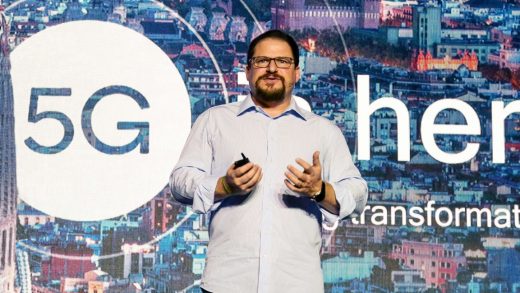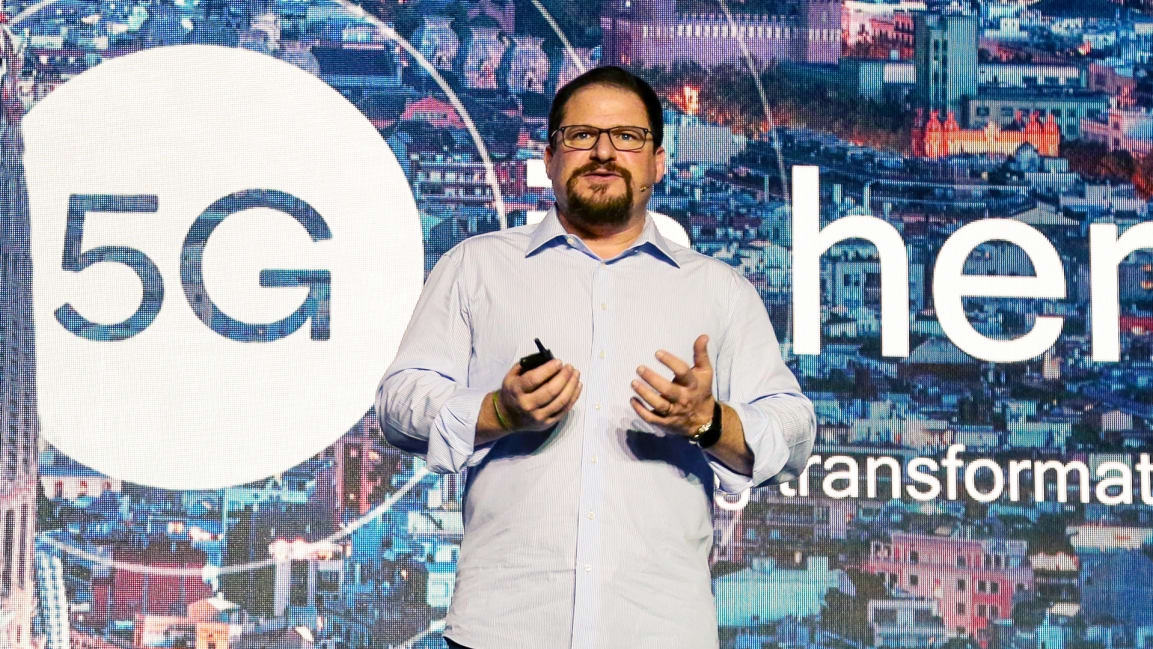Qualcomm is talking a big game about 5G—in 2020 and beyond
Qualcomm’s vision of 5G contains multitudes—and not just of devices, but of frequencies and of timelines.
Cristiano Amon, president of the San Diego-based telecommunications-hardware firm, used his keynote during Qualcomm’s analyst day Tuesday to pitch an ambitious vision of 5G that spanned not just smartphones but cars and laptops.
His vision, interpreted judiciously, adds to the argument to avoid shopping for a 5G phone until maybe this time next year. And even then, you’d better be ready for your experience of the next generation of wireless broadband to vary dramatically with your location.
That’s not what much of the hype about 5G would lead you to believe—that this breakthrough development will reformat the future. The reality is more complicated, as Amon spent a lot of time emphasizing.
Start with the frequencies 5G will use, which you can think of as a layer cake topped with millimeter-wave bands. These millimeter-wave bands will offer the fastest and most responsive connectivity: downloads exceeding one gigabit per second and latency below 10 milliseconds, performance traditionally confined to wired broadband.
“Certain use cases in the smartphone will not be possible without millimeter-wave,” Amon said. He checked off such scenarios as cloud-hosted games that would bring the high-resolution graphics of gaming consoles, and cloud storage that would be functionally indistinguishable from flash storage on a smartphone.
“Millimeter-wave bandwidth and latency allow you to actually move storage to the cloud,” Amon declared.
But millimeter-wave 5G suffers from an exceedingly short reach, under 1,000 outdoor feet from cell site to smartphone—with indoor reception much dicier. On a national or a worldwide level, millimeter-wave 5G is years from being mainstream. Only U.S. carriers have adopted it so far, and they have yet to offer it outside parts of select cities. Filling in that patchy coverage will require setting up thousands of new cell sites.
Millimeter-wave bandwidth and latency allow you to actually move storage to the cloud.”
Cristiano Amon
The city-detail coverage maps Verizon posted Tuesday to document its millimeter-wave 5G, for example, show that it is confined to particular streets outdoors, with the densest coverage in Chicago. And the 5G coverage data offered by network-analysis firm RootMetrics, which were gathered from testing apps on people’s phones, now backs that up.
To see for yourself, select a carrier, choose the “Best technology found” layer, and keep zooming in until you see purple hexagons. In Verizon’s case in New York, this millimeter-wave 5G covers discrete blocks in Lower Manhattan, across Midtown, and at the southern corners of Central Park.
(Disclosure: I also write for Yahoo Finance, one of Verizon’s media properties.)
The rest of the 5G layer cake consists of lower-frequency bands, both those employed for today’s low-frequency LTE bands and others under 6 GHz that are set to be opened for 5G service. They don’t deliver millimeter-wave’s speed and responsiveness but cover much more ground. That’s why the most expansive 5G network thus far in the U.S., Sprint’s, eschews millimeter-wave frequencies in favor of the same 2.5 GHz band as its 4G LTE.
Amon’s optimistic forecast for 5G coverage next year—”It’s fair to expect by 2020, you’re going to have all metropolitan areas with 5G coverage”—assumes the use of those slower but longer-range bands to fill out 5G coverage.
Amon noted that millimeter-wave 5G hit 65% outdoor coverage from existing LTE cell sites in San Francisco. But lower-frequency 5G frequencies at existing LTE cites allowed for 78% coverage in Frankfurt—and when you add spectrum shared as needed from 4G, the figure was 96%.
But the customers served those bottom slices of the 5G layer cake won’t get that hyperresponsive connectivity, which might make running everything from the cloud a much slower experience than Amon has promised.
Internationally, Amon pointed to 2021 as the year when millimeter-wave 5G will take off outside the U.S., with support from carriers in Brazil, Chile, Germany, Italy, Russia, and Singapore, among others.
Much of Qualcomm’s own stake in 5G involves the chipsets inside Android smartphones. But although its X50 5G modem owns the nascent U.S. market, that only supports millimeter-wave 5G and has to sit alongside Qualcomm’s existing “system on a chip” (SoC) hardware inside a phone. That makes today’s 5G phones bigger and more battery-hungry than they’d otherwise be.
It won’t be until at least next year that a 5G-compatible SoC that extends Qualcomm’s Snapdragon line of phone processors will remedy those shortcomings.
The customers served those bottom slices of the 5G layer cake won’t get that hyper-responsive connectivity.
“In 2020, you’re going to see 5G across our entire portfolio of products,” Amon said. “You’ll see us driving as fast as possible the entire device ecosystem to 5G.”
(Apple users will probably have to wait for that Cupertino-based firm to develop its own 5G circuitry for iPhones, based on the Intel wireless-modem business it bought this spring.)
Qualcomm’s 5G ambitions extend beyond phones to internet-of-things appliances, industrial robots, and other connected gadgets, and Amon used the last section of his keynote to highlight two of those possibilities.
Networked and increasingly autonomous automobiles represent one such future, with 18 automakers having selected Qualcomm’s connected-car platform. “We’re in the automotive business to stay,” Amon said without getting into further details—those, he said, will come at CES in January.
Laptops are another. Amon pointed to the new Microsoft Surface Pro X, introduced in early October, which includes a processor developed with Qualcomm, as a model for a future of mobile computing: always connected to cloud services that can scale up to any possible need.
“The next transformation of the enterprise with the hyperscalar cloud is going to create an opportunity for more value with the connected PC experience,” Amon said.
But as with smartphones, cars, and other 5G devices, the customer satisfaction with that connectivity may depend a great deal on where they experience it—and on how companies selling this stuff meet people’s expectations after raising hopes with their 5G fervor.
(27)



